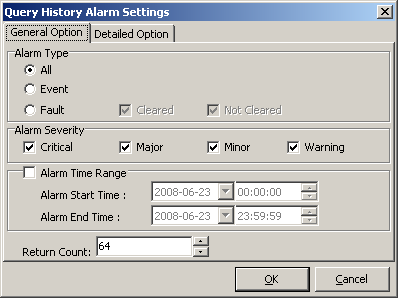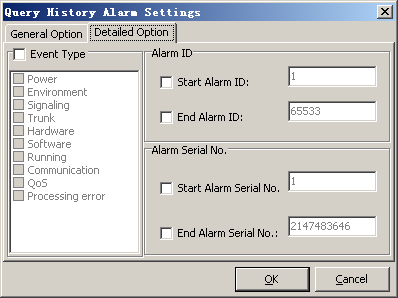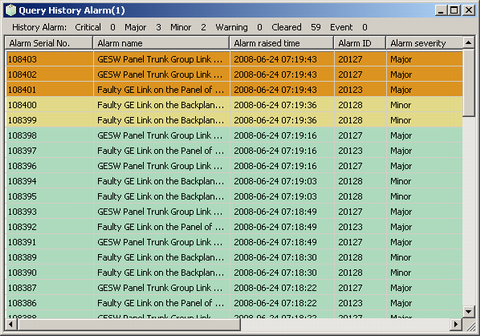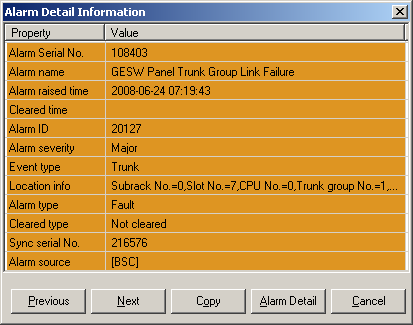This describes query the relevant information about history alarms in the alarm system. History alarms consist of fault alarms, cleared alarms, and all event alarms.
Prerequisites
- The LMT runs normally.
- The communication between the LMT and the BSC is normal.
Procedure
- Through GUI
- Choose , or click
 . A window is displayed, as shown in Figure 1.
. A window is displayed, as shown in Figure 1.Figure 1 Query History Alarm Settings dialog box (General Option tab page)
- On the General Option tab page, set Alarm Type, Alarm Severity, Alarm Time Range, and Return Count.
- In Figure 1, click the Detailed Option tab page, as shown in Figure 2.
Figure 2 Query History Alarm Settings dialog box (Detailed Option tab page)
- Set parameters in Event Type, Alarm ID and Alarm Serial No. areas.
- Click OK. A dialog box is displayed, as shown in Figure 3.
Figure 3 Querying history alarms
- Select the alarm to be queried, and then right-click it to choose . A dialog box is displayed, as shown in Figure 4.
Figure 4 Detailed information about the selected alarm
 NOTE:
NOTE: As shown in Figure 3, the shortcut menu also provides the following options:
- : Query history alarms again.
- : Save the query results of all the history alarms.
- : Save the query result of selected history alarms.
- To set the display mode of the alarm information, choose .
- : Set alarm filtering conditions.
- Through MML
- Run the LST ALMLOG command on the Local Maintenance Terminal to query the alarm logs.
Copyright © Huawei Technologies Co., Ltd.




